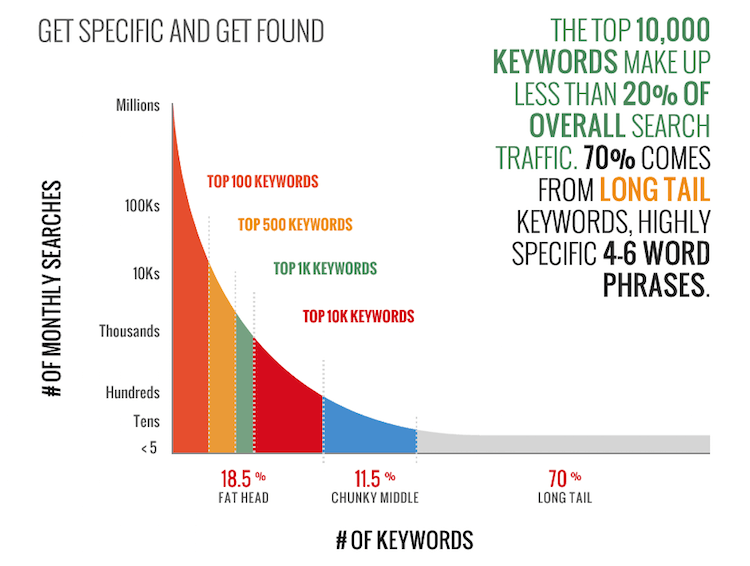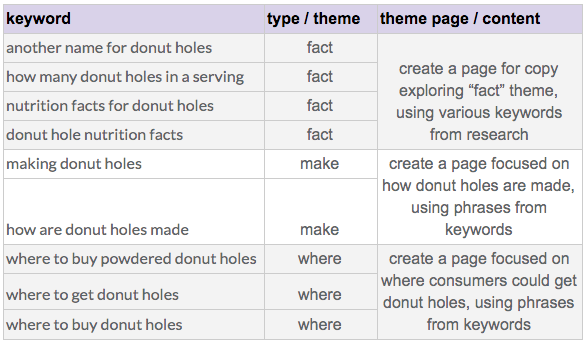What is this long tail I hear so much about?
Our custom-built tool allowing us to programmatically analyze keyword history to find long tail landing page and copy targets. Uncovering such opportunities is key, because 70% of Google queries ultimately leading to a sale are driven by multiple word queries from the ‘long tail’ of the distribution.

The long tail strategy is crucial for B2B processes where the generation of the actual lead is very unlikely to happen on the spur of the moment. When it’s much more likely that potential leads will consider their options carefully, make multiple searches with refining keywords, and think deeply before making a choice. We are experts at increasing your exposure on these terms.
Do I have a clear information architecture?
Armed with the results of our keyword data mining, keyword targets are provided within a map of information architecture that includes optimal page titles, H1 headings, meta description tags, keywords for use in body text, and URLs.
We may recommend additional pages for inclusion on the site at this stage, suggest strategies for the treatment of duplicate or near-duplicate content, and comment on the internal link structure of the site too. This not only allows us to ensure that prime keyword opportunities are given the best exposure, but also creates a clear, easy-to-action plan for content generation and rollout.
Do I have landing pages for my target keyword terms?
To rank for a closely related set of keywords, a tight focus is essential. We recommend selecting no more than three or four target keywords (with a unifying theme) for each page.
In almost all cases, research leads us to recommend additional landing pages alongside editing or augmentation of existing ones.
Are my landing pages accessible within a few clicks of the homepage?
Clear, swift navigation is key for users and for search engines. We advise on internal link structure, menu navigation, and on-page links to make sure both people and search engines can find and parse the right content easily. Navigational and linking choices also impact the way search engines prioritize different pages.
Do I have sufficient, unique, quality content?
Content is king in SEO. Why should Google risk sending users to a page that doesn’t provide detailed, unique information? Because of the large number of long-tail search terms required to make up a good steady traffic stream, they need to be targeted in groups or themes rather than individually.

Depending on the scope of your SEO play, you may need to balance content production against a few other variables:
| Possible Disadvantages | Possible Advantages |
| Risk of diluting page authority at a certain volume of pages. | Provides hyper-targeted content |
| Cost of making, editing, posting, and maintaining content | Provides opportunities for deeper long-tail focus in content. |
Detailed, informative text content that uses common elements from the long tail is the most valuable, rather than individual landing pages. Thus providing each landing page with expertly written, sales-oriented text copy serves three purposes:
- Building rankings for selected keyword targets.
- Expanding the keyword pool into the long tail.
- Encouraging conversion to get the most value from each visitor.
We have a strong specialization in conversion rate optimization and never let SEO get in the way of readability or tone.
